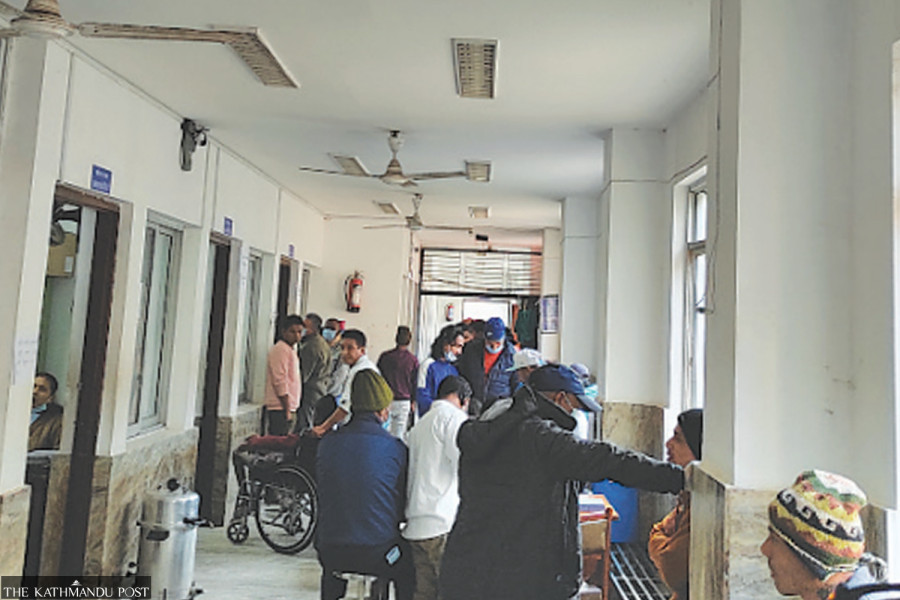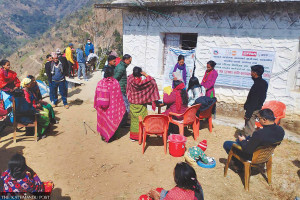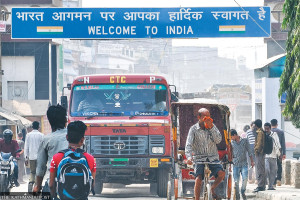 16.12°C Kathmandu
16.12°C KathmanduHealth
Prisoners, migrant populations and slums dwellers more vulnerable to TB
Most prisons in Nepal are overcrowded and hold inmates more than twice their capacity.
Post Report
Inmates residing in various prisons throughout the country are at high risk of getting infected with tuberculosis, as most of the jails are overcrowded and hold inmates more than twice their capacity.
A lack of provisions to keep the new inmates in quarantine for a certain period and seek a TB test report before sending them to prison cells has made all inmates vulnerable to TB infection, officials at the Ministry of Health and Population concede.
“First of all, most of our jails are overcrowded and several inmates have to reside in a single room,” said Prakash Budhathoki, spokesperson for the Ministry of Health and Population. “As TB is an airborne disease and most jails in the country do not have facilities to isolate the sick, the risk of disease infecting healthy prisoners is high.”
Tuberculosis, or TB, is caused by Mycobacterium tuberculosis that most often affects the lungs. Although TB is curable and preventable, it is estimated that the neglected disease kills at least 46 people a day in Nepal or around 17,000 people in a year.
When people with TB cough, sneeze or spit, they emit the TB germs into the air, and a person who inhales even a few of these germs acquires the disease. This makes tuberculosis difficult to contain, experts say.
Budhathoki, who served as director of the Central Jail Hospital in the past, said that at least 55 inmates at the Central Jail have TB. Some of them are also infected with multi-drug resistant tuberculosis or MDR-TB.
Health experts say if the treatment is stopped in the middle or withdrawn without completing the course, the TB patient could develop multidrug resistance, which could also lead to drug-resistant TB. People suffering from multidrug-resistance TB transmit the same bacteria to others.
As the TB bacteria spread through the air exhaled by infected persons, doctors recommend isolating TB patients. But the overcrowded Central Jail has no facility to keep infected inmates. The Central Jail, built for 1,000 inmates, currently houses more than 2,500 prisoners.
Outside prison walls, migrant populations and slum dwellers are also vulnerable due to overcrowded living and working conditions. Officials say people over 65 years of age, malnourished children, those suffering from underlying conditions such as HIV and diabetes and smokers are also vulnerable to TB infection.
“We have been planning to carry out active case finding on the designated key vulnerable populations,” said Dr Prajwal Shrestha, director at the National Tuberculosis Control Centre. “We will carry out chest x-ray with the help of portable x-ray machines on the vulnerable populations at their places.”
Of the estimated 69,000 undiagnosed TB patients in the country, the Ministry of Health and Population diagnosed 37,500 infected persons in the fiscal year 2022-23.
Officials concede that thousands of undiagnosed TB patients in the community mean a heightened risk of the deadly disease spreading.
Nepal started providing TB treatment some 85 years ago, but it remains one of the major public health burdens for the country. The National Prevalence Survey 2018-19 estimated 117,000 TB patients in Nepal.
Nepal has committed to stopping TB spread through the WHO END TB Strategy by 2035 and eliminating the disease by 2050.
However, the National Prevalence Survey, carried out with technical and financial support from the UN health body, showed that the country is ‘not on track’ to meet the target.
According to the World Health Organisation’s Global Tuberculosis Report 2021, every year 10 million people contract the disease. The UN health agency says around 1.5 million people die globally every year from TB, making it the world’s top infectious killer.



















